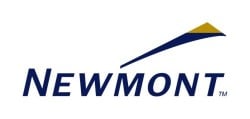The Vanguard Group is synonymous with the low-cost, buy-and-hold index fund revolution, but as of August, Vanguard might be behind the boldest experiment in the history of retail investing.
The mutual fund and ETF giant, which manages more than $5 trillion in investor assets, is making all ETF trading free on its brokerage platform this month, a move that runs the risk of leading investors to the kind of bad, market-timing behavior it has always shunned, especially from the bully pulpit of its influential and outspoken founder, Jack Bogle.

Scott Eells | Bloomberg | Getty Images John “Jack” Bogle, founder of the Vanguard Group, is responsible more than anyone else for the low-cost investing revolution, but he has criticized ETFs for encouraging too much trading. "We have had more and more speculators using ETFs to participate in the market. ... They turn over with fury," Bogle recently told CNBC.
More than 1,800 exchange-traded funds now can be traded without a commission by Vanguard brokerage customers as it attempts to win more brokerage business away from discount brokerage rivals, like Fidelity Investments, Charles Schwab, E-Trade Financial and TD Ameritrade. These other brokerage firms offer free access to some ETF families, numbering in the hundreds of portfolios, and proprietary ETFs if they run their own. But no trading platform has near the number of free ETFs as Vanguard now does. The new policy covers the entire ETF universe except for strategies directly associated with day trading �� leveraged or inverse funds.
The no-limit free-trading era comes amid return of volatility
Previously, Vanguard offered free ETF trading only to investors holding at least $1 million in a brokerage account, and even then there were limitations on how often ETFs could be traded in a 12-month period. Now there will be no restrictions, and no minimums required, to use the free-trading feature with any ETF.
ETF experts expect Vanguard rivals to fire back with their own enhanced free-trading offers. All of the established players in the financial services sector also face pressure from venture capital-funded start-ups, such as Robinhood, which offers a free brokerage trading app and has been growing rapidly �� in May Robinhood surpassed E-Trade in number of users for the first time. As the fee war continues in the exploding $3.5 trillion ETF market, experts are concerned that the line between helping consumers with low-cost investments and potentially hurting them could be crossed.
"They can't all go commission-free, but they'll also have to expand their lineups if they want to stay competitive," said Neena Mishra, director of ETF research at Zacks Investment Research. "While there is no doubt that investors are big winners as the fee war escalates, the downside is that the ease of trading and low transaction costs are also leading investors to trade more often, particularly in volatile markets. ... Volatility is back this year, and that's probably leading to too much ETF trading," she said.
On Wednesday, Fidelity announced it was launching the industry's first-ever index funds without any management fee, a core U.S. and a core international equity fund. This move has long been speculated on by index fund and ETF experts as the major asset managers have continued to push down fund management fees near zero in what has been described as an endless fee war. "Investors will pay a 0.00 percent fee, regardless of how much they invest in either fund, while gaining exposure to nearly the entire global stock market," Fidelity said in a release.
A recent survey conducted by Schwab found that most millennials say that ETFs provide the flexibility needed to react to short-term market swings. Eighty-nine percent said they expect to allocate more of their portfolio to ETFs during periods of market volatility. "That says a lot," according to Mishra.
ETFs make it easy to chase performance of the hottest segments and short the worst-performing ones, but investors have a history of piling into hot ETFs after the easy money has been already made, or shorting the weakest segments after they have already hit a bottom. "Trying to time the market is usually a futile exercise, and in fact, too much trading leads to subpar performance," Mishra said.
Trading in and out of funds can lead to lower performance
Research conducted on index funds by Morningstar director of global ETF research, Ben Johnson, supports this view. Johnson studied the gap between the returns a group of index funds generated (time-weighted returns) and the returns that investors, on average, experienced in those same funds once you account for their buying and selling (cash-flow weighted returns). The gap between the two (which is referred to as the behavior gap) is effectively a self-imposed penalty that investors suffer in their attempts to time the market. While Johnson studied traditional index funds, not ETFs, he expects that the ETF gap would be even wider.
Vanguard Group founder Bogle told CNBC earlier this year, "We have had more and more speculators using ETFs to participate in the market. ... They turn over with fury."
Mitch Goldberg, president of investment advisory firm ClientFirst Strategy, who often uses ETFs in client portfolios, said a major problem with expanding commission-free ETF trading lies with its motivation: to not give the client a reason to go to a competitor.
"The firms offering the commission-free trading market themselves like they're watching out for the retail investor, but I think they are appealing more to the gambler in them. There's a difference between driving trading costs down and driving the client to execute more trades. I think that can get lost on retail investors, unfortunately."
Research shows investors let their goals be influenced by brokerage options
Research conducted by Columbia University business professor and consumer behavior expert Michael Pham that dates back to that dot-com bubble era suggests that investors are prone to bad decision-making when a promotion is offered.
His research found that people tend to operate under two different mindsets when making financial and investments decisions: a "promotion focus" and a "prevention focus." The mere labeling of the type of instruments and accounts �� for example, trading account vs. IRA; or stock vs. mutual fund �� is sufficient to trigger either one of these mindsets. Once these mindsets are triggered, people tend to behave exuberantly, Pham said. It is either all about upside and gains, or only potential risks and downside.
"Interestingly, people end up letting their goals be set by the instruments and tools themselves," Pham said.
His research was conducted during the tech bubble of the early 2000s, and in a paper his team speculated that part of the irrational exuberance of the time was driven by the popularity of electronic brokerage accounts. "What you are describing reminds me of that pattern. It may be that 'free ETFs' now trigger a promotion focus: excessive attention to potential gains and ignorance of potential risks," Pham wrote in an email to CNBC.
"Investors haven't gotten any better at trading, regardless of the tools they have today," Goldberg said.
Vanguard, Schwab say investors are prepared
Officials at Vanguard and Schwab are not concerned, and counter that their research shows that ETF investors don't need to be hand-held. They are knowledgeable enough, and experienced enough with ETFs, to understand the right way to invest.
"Vanguard investors have bought in to our long-term, buy-and-hold philosophy. And our research demonstrates no meaningful differences in trading between fund investors and ETF investors," a Vanguard spokesman wrote in an email.
Vanguard looked at whether ETFs tempt investors to increase their trading activity, and examined the trading behavior of its own investors since there was no outside analysis that answered the question. Vanguard found that, contrary to the opinion of some investing experts and contrary to "speculations in the popular media," most investments are held in a prudent, buy-and-hold manner. Although behavior in ETFs is more active than behavior in traditional mutual funds, some of that difference is simply due to the fact that investors who are inclined to trade choose ETFs, not that investors who choose ETFs are induced to trade. Vanguard concluded that the ETF "temptation effect" is not a significant reason for long-term individual investors to avoid using appropriate ETF investments as part of a diversified investment portfolio.
There is one way that the Vanguard data analysis is less than entirely convincing: it was conducted in 2012. "It is a bit dated," the Vanguard spokesman wrote. But he added, "subsequent monitoring of the trading patterns of our investors who own ETFs shows that most Vanguard clients hold onto their ETFs for years as part of a long-term strategy."
"In times of volatility, investors pay more attention to their portfolios. ... A 'set it and forget it' approach may work for some, but it's a good idea to conduct regular portfolio checkups and adjustments. The fact that ETFs make this easier is positive for investors." -Heather Fischer, vice president, ETF and mutual fund platforms at Charles Schwab
A Schwab spokeswoman said when it first launched its Schwab ETF OneSource trading platform, it found no overall uptick in ETF trading although there was �� and continues to be �� a significant shift to commission-free ETFs. But it, too, is an older data set.
In a statement emailed to CNBC, Heather Fischer, vice president of ETF and mutual fund platforms at Charles Schwab, said, "We believe that ETF trading frequency is important to monitor." But the Schwab spokeswoman said there has not been any recent analysis conducted similar to the original one, "and the data isn't easy to pull."
Schwab has studied ETF use annually and does believe the data shows consistency on the part of investors, and the right investing approach often requires some level of trading. "In times of volatility, investors pay more attention to their portfolios, and some make adjustments to address market shifts. A 'set it and forget it' approach may work for some, but it's a good idea to conduct regular portfolio checkups and adjustments �� and the fact that ETFs make this easier is positive for investors," Fischer wrote.
In its most recent annual study of brokerage clients, Schwab found there was an increase in trades (an average of 34 trades in the last year vs. 25 in 2017) and that was likely driven by the more active, volatile market that investors are experiencing. The percentage of investors who said they traded one to 11 times a year was 40 percent in 2017, but down to 29 percent this year, as multiple categories of more frequent trading all rose. Schwab pointed out that is an uptick in all trades, not just ETFs.
"While the ETF investors surveyed say they are trading more overall, this still doesn't show they are 'day trading' �� they are trading less than one additional trade per month," Fischer wrote.
show chapters

Vanguard eliminates almost all ETF trading fees 9 Hours Ago | 02:02
A few additional ETF data points give Schwab confidence that investors understand the appropriate uses for ETFs. Year over year, the number of investors who say they hold ETFs for less than a year and hold ETFs for more than a year hasn't changed �� it's about 50/50. And most investors say they use ETFs to reach a long-term goal �� 60 percent in 2018 versus 59 percent last year.
Vanguard is going free the right way: agnostically allowing access to all of its rivals funds, rather than entering into a preferred relationships with a specific ETF family. And it has done more than any other fund company to reinforce the belief in low-cost, buy-and-hold as the investing philosophy that best serves the majority of the retail investing public.
But markets are more volatile than they have been in several years, and the longer the bull market extends �� even if they dont die of old age �� the more investors need to deal with the prospect of a turn for the worse in the economic cycle. There is an entirely new generation of investors coming up and accumulating wealth at a time when ETFs are greater in number and use than ever before, especially among millennials. The timing of this move could test that temptation to trade, too much, sooner rather than later.
But completely free ETF trading was probably inevitable. Schwab was an early leader with 200-plus commission free ETFs, and Fidelity more recently began a preferred relationship with BlackRock's iShares. Both are likely to expand the free offerings again soon, Mishra said.
"Trading of stocks and ETFs has been near-free for years already," Goldberg said. "For some people there is risk and for others there is not. The discount brokers need to draw more newbies into the fold, so this is the new bait. One wonders what the end game is."
Schwab CEO Walt Bettinger dismissed the idea that the company is "feeling any competitive pressure from someone charging zero commissions," in an interview with the San Francisco Business late last year, but the broker faced more recent questions about the threat from Robinhood and zero-fee trading at its annual meeting. "The answer is 'no.' There's always been firms pursuing zero. You have to generate revenue somewhere. They're offering subpar execution on the purchase and sale of their stock or making money in some other area of their relationships."
One of Bogle's favorite phrases, cited last year in a Vanguard blog post on the dangers of investors chasing "promotions" offered by fund companies attempting to match Vanguard on low costs, is probably the best advice: Caveat emptor. A brokerage platform can offer the buyer the best deal yet in the history of low-cost ETF trading, but it can't protect you from your own behavior.
 Intesa Sanpaolo (BIT:ISP) received a €3.00 ($3.53) price target from stock analysts at HSBC in a research report issued to clients and investors on Thursday. The brokerage presently has a “buy” rating on the stock. HSBC’s target price points to a potential downside of 2.60% from the stock’s current price.
Intesa Sanpaolo (BIT:ISP) received a €3.00 ($3.53) price target from stock analysts at HSBC in a research report issued to clients and investors on Thursday. The brokerage presently has a “buy” rating on the stock. HSBC’s target price points to a potential downside of 2.60% from the stock’s current price.
 Scott Eells | Bloomberg | Getty Images John “Jack” Bogle, founder of the Vanguard Group, is responsible more than anyone else for the low-cost investing revolution, but he has criticized ETFs for encouraging too much trading. "We have had more and more speculators using ETFs to participate in the market. ... They turn over with fury," Bogle recently told CNBC.
Scott Eells | Bloomberg | Getty Images John “Jack” Bogle, founder of the Vanguard Group, is responsible more than anyone else for the low-cost investing revolution, but he has criticized ETFs for encouraging too much trading. "We have had more and more speculators using ETFs to participate in the market. ... They turn over with fury," Bogle recently told CNBC.  Vanguard eliminates almost all ETF trading fees 9 Hours Ago | 02:02
Vanguard eliminates almost all ETF trading fees 9 Hours Ago | 02:02 
 Airbus (EPA:AIR) has been given a €133.00 ($154.65) target price by stock analysts at JPMorgan Chase & Co. in a report released on Tuesday. The firm presently has a “buy” rating on the stock. JPMorgan Chase & Co.’s price target indicates a potential upside of 38.54% from the stock’s previous close.
Airbus (EPA:AIR) has been given a €133.00 ($154.65) target price by stock analysts at JPMorgan Chase & Co. in a report released on Tuesday. The firm presently has a “buy” rating on the stock. JPMorgan Chase & Co.’s price target indicates a potential upside of 38.54% from the stock’s previous close. A Tesla Model S on display at a showroom in Shanghai.
A Tesla Model S on display at a showroom in Shanghai.  Tesla's Model 3 may not satisfy 'mainstream' buyers
Tesla's Model 3 may not satisfy 'mainstream' buyers  24/7 Wall St.
24/7 Wall St. Newmont Mining Corp (NYSE:NEM) EVP Elaine J. Dorward-King sold 3,000 shares of the firm’s stock in a transaction that occurred on Monday, July 2nd. The stock was sold at an average price of $37.47, for a total value of $112,410.00. Following the sale, the executive vice president now directly owns 111,831 shares of the company’s stock, valued at $4,190,307.57. The sale was disclosed in a document filed with the SEC, which is accessible through this hyperlink.
Newmont Mining Corp (NYSE:NEM) EVP Elaine J. Dorward-King sold 3,000 shares of the firm’s stock in a transaction that occurred on Monday, July 2nd. The stock was sold at an average price of $37.47, for a total value of $112,410.00. Following the sale, the executive vice president now directly owns 111,831 shares of the company’s stock, valued at $4,190,307.57. The sale was disclosed in a document filed with the SEC, which is accessible through this hyperlink. 


